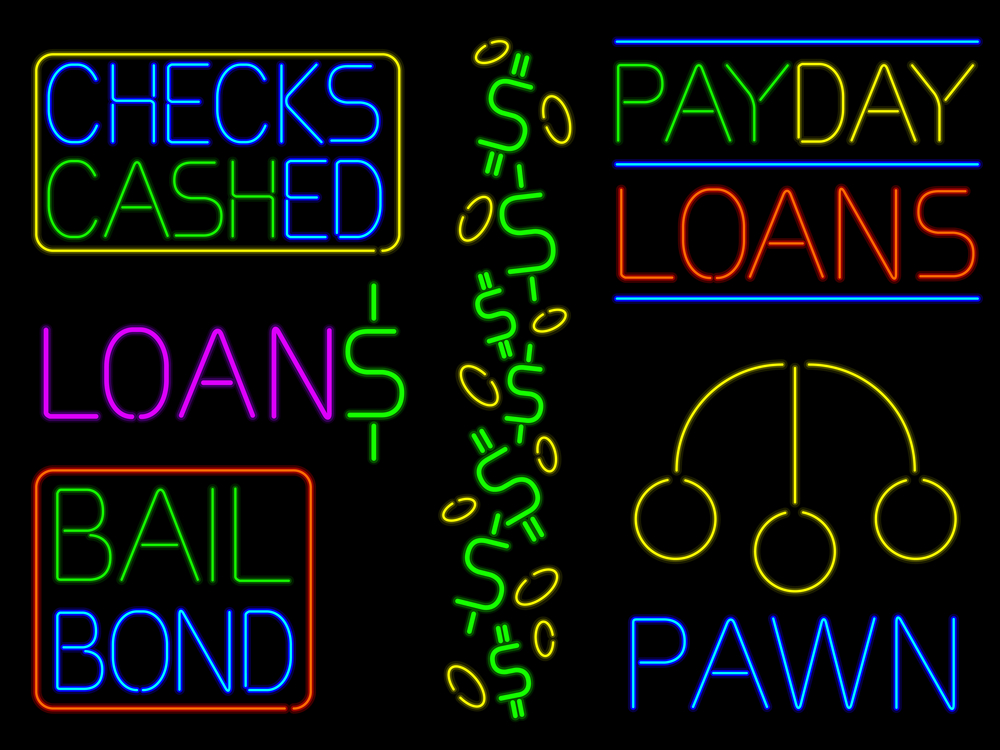Do Payday Loans Ever Make Financial Sense?

Is there ever a time to use a payday loan? Living paycheck-to-paycheck can wear you down. Spending every penny of your income leaves no room for error. While such behavior may be thought of as a hallmark of the poor, studies have shown that some “hand-to-mouth” households are relatively wealthy. But most of their assets aren’t easily or painlessly converted to cash, like a home or retirement account. These folks may find themselves confronted with a pressing need for funds and no easy way to get the money quickly.
Payday loans — short-term, high-interest debt that’s usually backed by a borrower’s post-dated check — may offer a tempting alternative. While these products are particularly poisonous to households with limited financial resources, there may be times when resorting to a payday lender seems to make sense. Yet that solution is often like treating the symptom rather than the disease.
Who takes out payday loans?
While living hand-to-mouth is a financial condition that plagues Americans across the wealth spectrum, the U.S. Consumer Financial Protection Bureau (CFPB) in Washington says the median income of a payday loan borrower is less than $23,000. Research by the Center for Responsible Lending (CRL) determined the typical borrower is white, female and from 25 to 44 years old.
But five socio-economic groups had the “highest odds” of taking out a payday loan: individuals without a college degree, African Americans, people earning less than $40,000 a year and those who are separated or divorced, according to CRL, based in Durham, N.C.
Easy to get but worth it?
When a cash need arises, payday loans — similar to car title loans — are easy to obtain. Usually a borrower only needs to show proper identification, proof of income and a personal checking account to qualify. The lender typically expects either a post-dated check or electronic access to a borrower’s bank account to ensure repayment. Credit scores aren’t examined and an applicant’s capacity to repay the loan in light of other debts and expenses isn’t considered.
In exchange for quick access to much-needed cash, the fees are extreme — ranging from $10-$20 per $100 borrowed for two weeks. The effective annual percentage rate (APR) is often near 400% and sometimes far higher. That has led to outright bans of payday lending or limits in 22 states, including curbs on how many loans a consumer can take out in a year.
Typical borrowers often don’t have the means to repay the debt as well as cover other routine expenses. A series of short-term, high-cost loans frequently results in such cases, entrapping many at a cost of hundreds of dollars in cumulative fees, the CFPB says. Consumers who made use of payday lenders usually did so repeatedly over a 12-month period, the bureau said in a study released last year. Almost half of borrowers took out more than 10 short-term loans in a year.
Can payday loans be a low-cost solution?
But when facing a cash crisis, what’s an individual to do? Surprisingly, Moebs Services, an economic research firm in Lake Bluff, Ill., says payday loans can be a low-cost solution, compared with alternatives such as overdrawing a checking account.
Banks are raking in increasing overdraft fees, reflecting the financial pressure hand-to-mouth households face to make ends meet. That revenue stream was on track to rise 1.6% to almost $32 billion last year, Moebs has estimated.
To read more, visit the original post: Do Payday Loans Ever Make Financial Sense?.
The post appeared first on NerdWallet.
Comments
Post a Comment